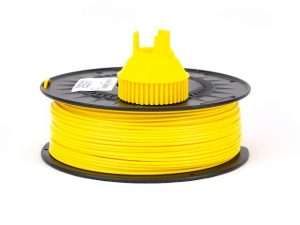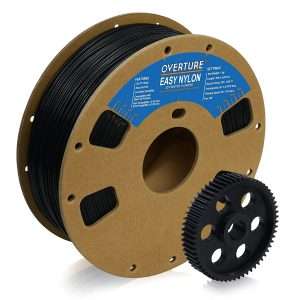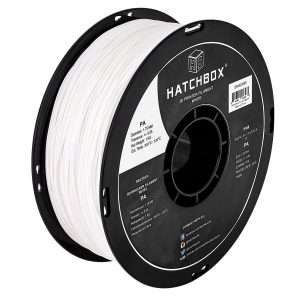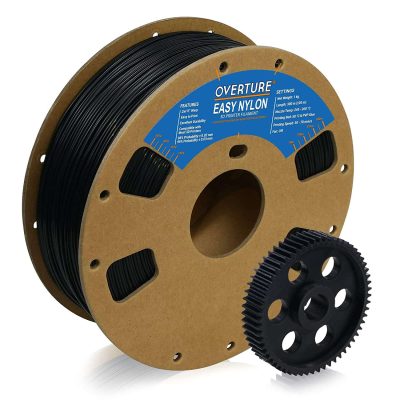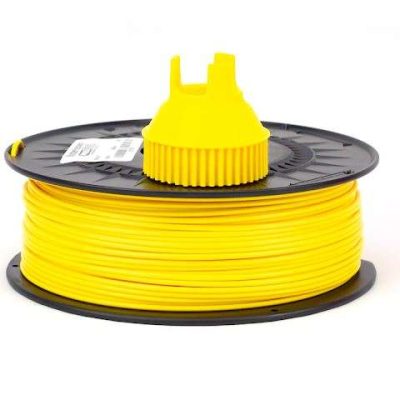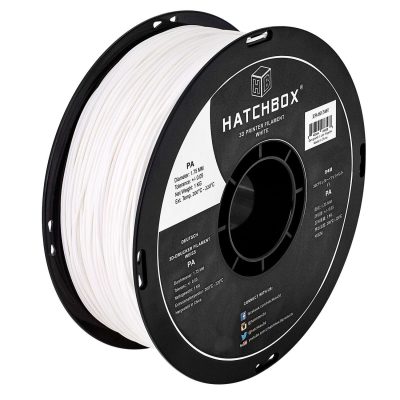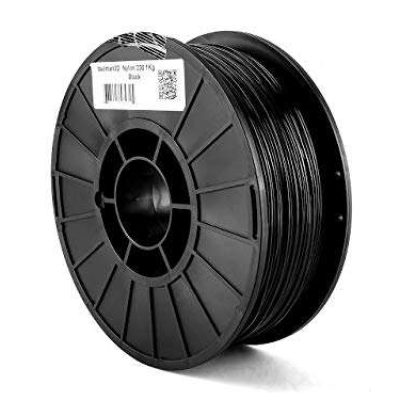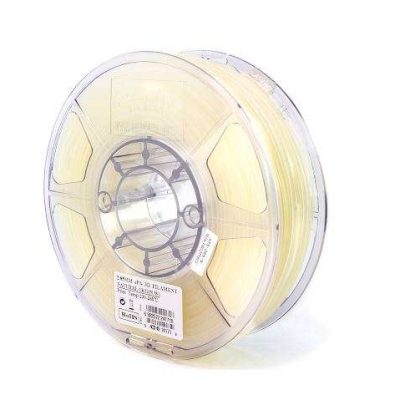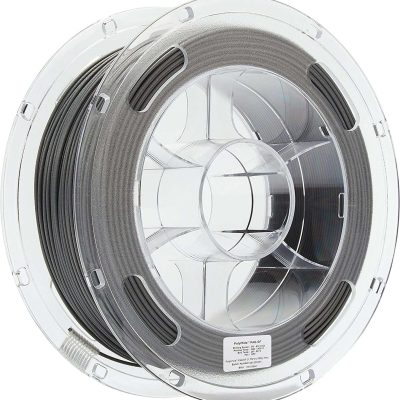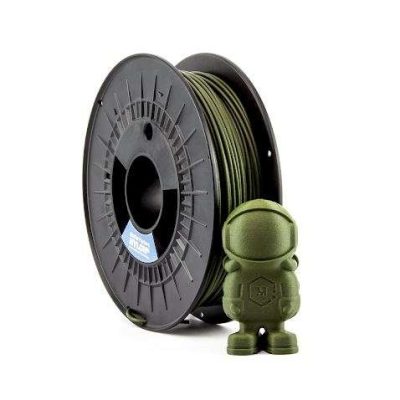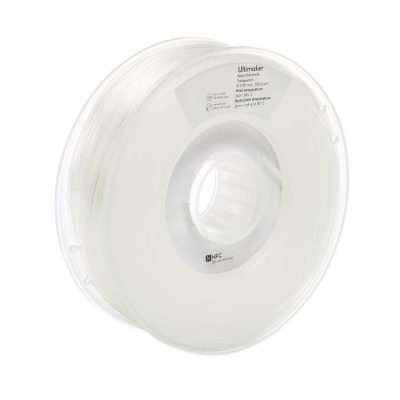- Last Updated: January 12, 2024
-
 Pat Nathaniel
Pat Nathaniel
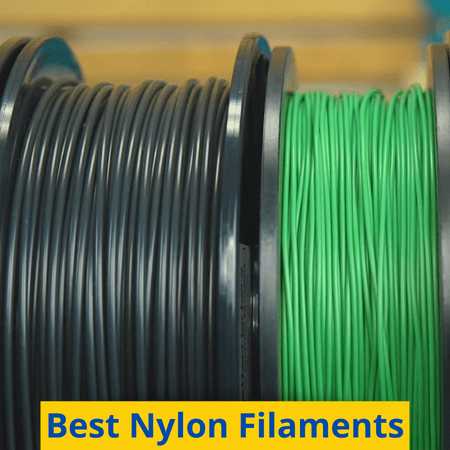 Does it seem like you always need to pick between toughness and detail quality when choosing your 3D printing materials? If so, maybe it’s time you gave nylon filament a try.
Does it seem like you always need to pick between toughness and detail quality when choosing your 3D printing materials? If so, maybe it’s time you gave nylon filament a try.
Nylon filament can create extremely strong and durable parts without sacrificing detail quality. When you need accurate parts that last for ages, nylon is precisely what you need.
But not all nylon filaments are made equal and some are downright terrible. How can you ensure you don’t waste money on poor-quality material?
Read on to find out what is the best nylon filament for your needs.
Table of Contents
Best Nylon Filaments At A Glance
Picture a world where an evil overlord has taken over and destroyed all nylon filaments — except one. If the one he spared is Overture Nylon, though… How evil can he really be?
Overture’s CoPA filament is an excellent nylon filament for beginners and seasoned users alike. It has great strength and toughness and produces sharp part details.
But you haven’t heard the best yet.
Unlike most nylons, Overture Nylon is so easy to print with. It flows out of the nozzle almost like PLA and has virtually zero warping. You may have to fiddle with your printer settings a bit to find that sweet spot, but once you do, you’re on the express service to Nylon Town.
As a cherry on top, the filament is affordable to boot. Overall, this is one of the best nylon filaments you can buy — and at this price, you definitely should.
Pros
- Part strength and detail
- Very easy to print
- Little to no warping
- Cheap
Cons
- Needs specific printer settings
- Issues with print bed adhesion
- Smells a bit
The cheapest product doesn’t always give you the best value — you have to consider the quality as well. From that perspective, MatterHackers PRO Series of Nylon filaments gives you the most bang for your buck.
MatterHackers is famous for quality products and the PRO Nylon filaments aren’t any different. Available in many different colors, these filaments produce smooth and hard surfaces with high stiffness. If you need strong parts that look good, you can’t do much better.
But what about the value?
Granted, this isn’t the cheapest filament on the market. But the price is dirt cheap when you consider the quality and color options. Whatever kinds of nylon parts you want to print, you can.
Be prepared to tweak your settings to get the filament to print smoothly, though. But that’s effort well spent.
Pros
- Amazing price/quality balance
- Comes in many colors
- Professional strength and detail
Cons
- Sticky filament feeding
- Printing can be messy
Serious 3D printing requires some serious filament. And if you mean business, then Hatchbox PA Nylon is ready to serve.
This is a professional-level nylon filament in every way. Hatchbox PA Nylon is incredibly tough and durable. It produces consistent results, meaning you can confidently sell your prints and know your customers will be happy.
The filament is also very versatile. It doesn’t matter what kind of product you want to make. From decorations to phone cases or moving parts, Hatchbox has your back.
But we meant it when we said this is a professional nylon filament.
This stuff is not for beginners. Without a good printer and careful setup, the filament is prone to warping and failed prints. It also has a premium price tag.
Check out our review of the best nylon 3D printers if you want a stress-free printing experience.
But if you know what you’re doing, this premium filament is what you need to get your printing shop ready for production.
Pros
- Excellent part strength
- Versatile
- Ready for business
Cons
- Difficult to print
- Expensive
Taulman3D is one of the more popular nylon filament brands and for a good reason. Their Nylon 230 filament makes nylon printing easy and reliable.
This nylon material prints smoothly at a surprisingly low extruder temperature. You need to set the head to only 445°F (230°C). Oh, so that’s where the name comes from…
The filament loads smoothly into the machine and comes through the extruder without pops, oozing, or snapping. You can print well-detailed parts easily and consistently.
But what kind of parts can you make?
Pretty much anything, really. This filament is suitable for everything from bearings and bushings to cases and oven knobs.
It’s not as stiff as Overture and Hatchbox, though, so it may not be the best choice for something like gears. It can also stick to your print bed VERY tightly — tight enough to rip pieces off glass beds.
But as long as you treat it right, Taulman3D Nylon 230 creates parts with consistent quality.
Pros
- Easy printing
- Consistent quality
- Reasonable price
Cons
- Very temperature-sensitive
- Bendy
- Sticky on the print bed
They say that the toughest people are those who can bend but will not break. If that’s true, then eSun Natural Nylon is one of the toughest nylon filaments out there.
This filament definitely results in parts with some flex, but don’t mistake that for weakness. Most people won’t be snapping this stuff with their bare hands.
Its toughness makes eSun Natural Nylon a great choice when you need a bit of bend and top-shelf strength, like with RC car wheels and engineering components.
Print carefully, though, since the filament is prone to warping. It’s also not the prettiest stuff. The natural part in the name means the filament is a natural translucent color that cures into a yellowish tint.
Don’t judge a filament by its look, though. With eSun Natural Nylon, you can print parts that should last but not be seen.
Pros
- Very tough and sturdy parts
- Great adhesion
- Good price
Cons
- Needs a high temperature
- Warps easily
- Yellow tint might be off putting
There are good things, and there are cheap things. You can’t have both… right?
That’s what we thought until we found Polymaker PA6-GF Nylon filament.
This composite nylon filament is reinforced with glass fibers, giving it excellent, engineering-level strength and heat resistance. There’s also practically no warping or shrinking, so you won’t have to fiddle with scaling your parts. Go on and print spares for your car at home
But what about the price?
This filament is cheap. Not the cheapest, but for such a ridiculously strong material, the price is definitely right.
You do need a very high nozzle temperature, though, so make sure your printer is up to it. Also, do us a favor and don’t try print overhangs, alright? That won’t end well.
But as long as you don’t need overhangs, Polymaker PA6-GF is a strong and affordable filament option.
Pros
- Incredible strength
- Great price for the quality
- No warping or shrinking
Cons
- Needs a high-temperature print head
- Not good for overhangs
If you’re looking to print parts that can take a punch, nylon is already a great material. But MatterHackers NylonG filament makes your parts even stronger.
And the secret behind it all is glass.
NylonG offers similar — if not better — mechanical performance as Polymaker. It has high impact resistance and also keeps its shape under constant stress. Basically, it will last, no matter what you throw at it.
But you can’t make very detailed surfaces with coarse glass fibers, right?
Wrong — this nylon filament creates surprisingly smooth and detailed parts. It comes in multiple colors, so you can make parts both pretty and strong.
Glass fiber-filled nylon filament isn’t very easy to print, though. The inevitable failed prints and NylonG’s high price mean you’ll have to pay a pretty penny for your parts.
But if you can afford it, MatterHackers NylonG is a premium filament for tough and smooth prints.
Pros
- Incredible strength
- Multiple available colors
- Good detail
Cons
- Hard to print
- Expensive
- Some colors turn yellowish under sunlight
You may recognize Ultimaker as one of the most popular 3D printer manufacturers. It probably won’t surprise you, then, that they’re also one of the best nylon filament brands.
But what makes Ultimaker Nylon so great?
Simply put, sheer professional quality. Any advantages of nylon filament apply to Ultimaker Nylon. It’s strong, heat and corrosion resistant, and as a big plus, it absorbs less moisture than the products of other filament brands.
It just works, like a professional should. That’s especially true if you have an Ultimaker printer.
But the thing about professionals is that you have to pay for them. Ultimaker Nylon is an expensive filament for expensive machines (although it will work with any 2.85mm printer). It is also only available as transparent or black.
In summary, Ultimaker Nylon performs with such steady quality that it’s almost boring. It’s one of the best nylon filaments, as long as you don’t mind the price.
Pros
- Great all-around performance
- Low moisture absorption
Cons
- Expensive
- No color options
3D Printing with Nylon Filament
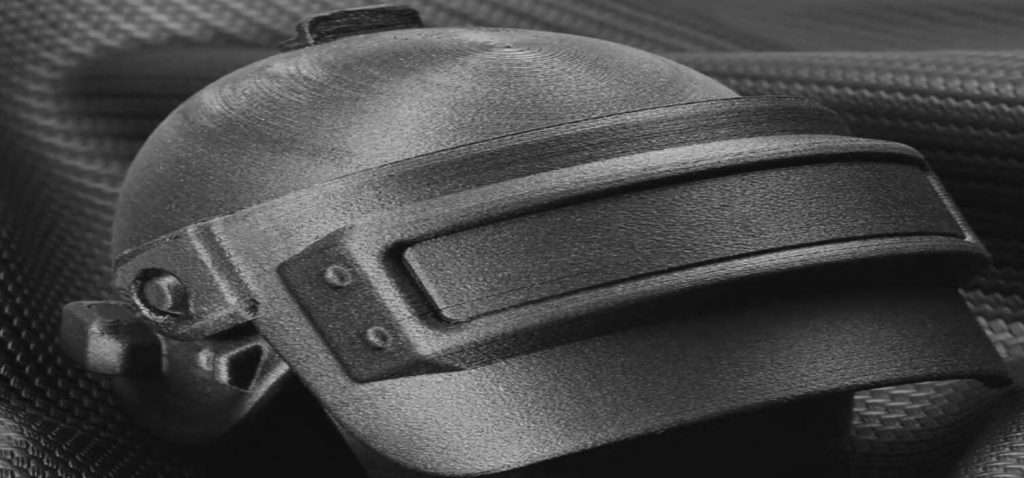
When you hear the word “Nylon,” you might first think of something like stockings. But nylon is good for much more than lingerie.
In 3D printing, nylon is a strong and durable material that can also produce great detail quality. Thanks to these exceptional properties, nylon is a great option for anything from toys to space shuttle components.
But nylon is a demanding material and printing with it can be tricky. Unless you know how nylon filament works, you’ll just waste money on failed prints and broken printer parts.
What is Nylon?
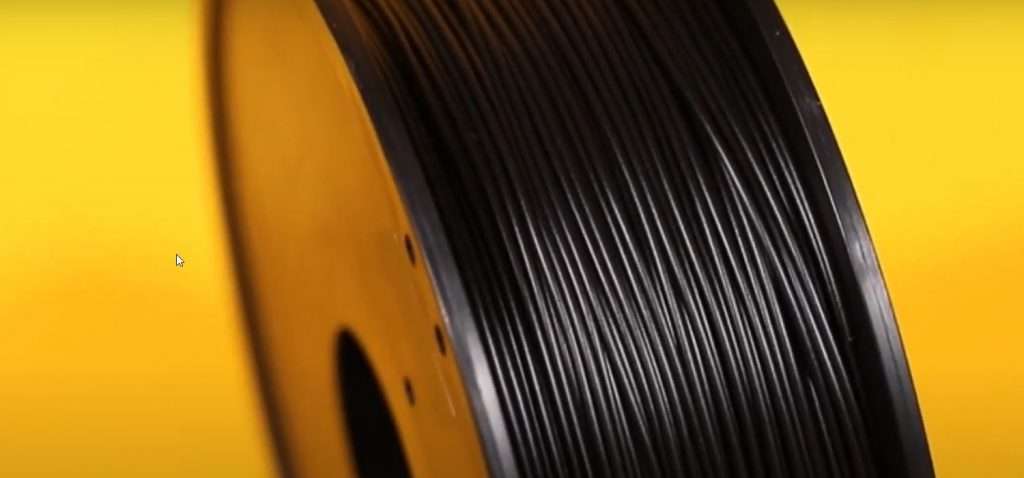
Nylon, also called polyamide (PA), is a synthetic polymer. Its molecular structure consists of extremely long chains of molecules made out of short, repeating sections of atoms.
Alright, but what does this scientific mumbo actually mean?
In short, its structure makes nylon very strong. It has enough strength and flexibility to resist both sudden impacts and prolonged stress. At its best, nylon filament can also create thin walls, giving it great detail quality.
If you’re looking to print strong and detailed parts, consider giving nylon a go.
How to 3D Print Nylon Filament?
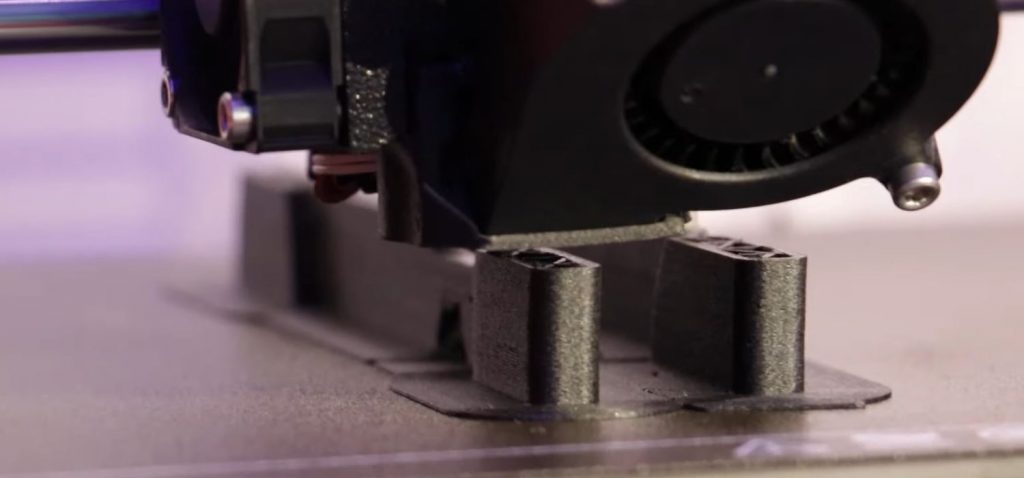
Although nylon can make great parts, getting those results can be difficult. When you print with any nylon filament brands, you have to consider three things — its melting temperature, abrasiveness, and tendency to absorb moisture.
First, nylon has a high melting temperature, generally at or above 250°C (482°F). Naturally, the exact melting point depends on the filament you use, but in general, nylon needs a lot of heat.
Not all 3D printers can reach high enough temperatures. Make sure yours can before you try to print nylon.
Second, nylon is an abrasive and harsh printing material. It will chew through conventional brass nozzles very quickly. Unless you want to blow money on new nozzles every week, invest in a quality all-steel nozzle.
Third, nylon is very hygroscopic — meaning it absorbs moisture from the air. Moist filament will ruin surfaces and result in poor layer adhesion. You must dry nylon filament before printing, either with a special drying unit or by popping it in a 70°C (160°F) oven for 6-8 hours.
Print Settings for Nylon Filament
The exact printing settings you need depend on your specific nylon filament brand. That said, you can start experimenting with these settings:
- Extruder hot end temperature: 250-300°C (482-572°F)
- Printing bed temperature: 75-100°C (167-212°F)
- Printing speed: 20-80 mm/s
- Printer chamber: Enclosed
The hot end temperature we’ve given might be higher than what your filament label recommends. That’s because all-metal nozzles (you are using one, right?) have lower heat conductivity than brass ones. Setting the temperature a bit higher ensures proper melting and filament flow.
How Strong is 3D Printed Nylon Filament?

Nylon filament is strong, but how strong?
The answer is, “very.” Even traditional nylon filament, without reinforcement, is probably the strongest common FDM printing material. It’s even stronger than PETG and definitely stronger than PLA.
But what does it mean to be strong?
Nylon has excellent flexibility — it won’t flop around but it will bend enough to withstand impacts. It’s also not brittle like some other “strong” materials (looking at you here, PLA).
Finally, Nylon is chemical and heat resistant, which gives parts a longer lifespan.
What Designs is Nylon Filament Best For?
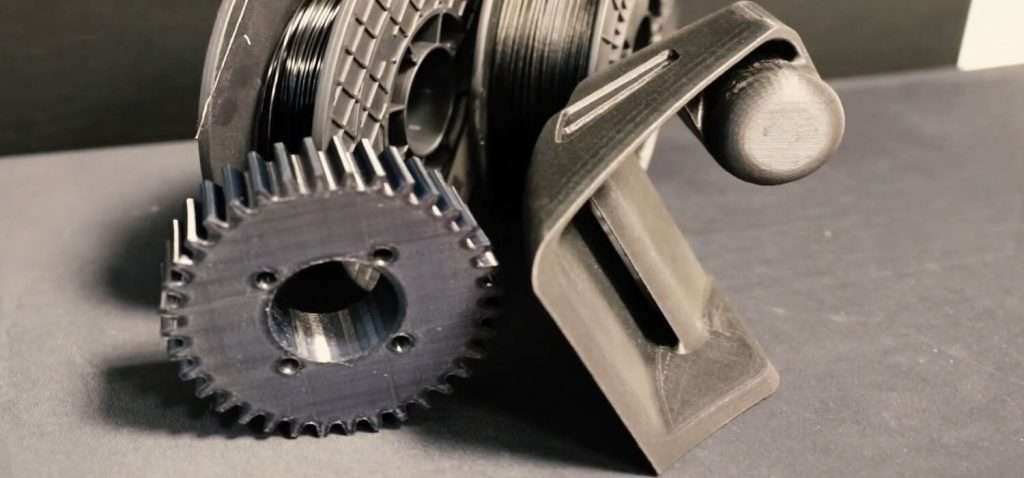
So, what should you print with the best nylon filament you just bought?
In short, anything that needs to last long in a mechanical application. Its strength, detail quality, and low friction coefficient make it particularly suitable for moving parts.
But electronics cases, tools, and gears are all also on the table. Some people even print skateboard wheels with nylon — it can withstand the impact of the most radical kickflips.
Some other good ideas for nylon parts include:
- Shelf supports
- Hinges and joints
- Tool handles
- Snap-fit parts
- Nuts and bolts
- Cable ties
Advantages and Disadvantages of Nylon Filament
Pros
- Strong, flexible parts
- Great detail and surface quality
- Chemical, heat, and UV resistance
- Can print moving parts
- You can paint nylon prints
Cons
- Needs drying before use
- Difficult to store
- Difficult to print, not beginner-friendly
- Expensive compared to other filaments
- Smells and releases toxic fumes
How to Store Nylon Filament?
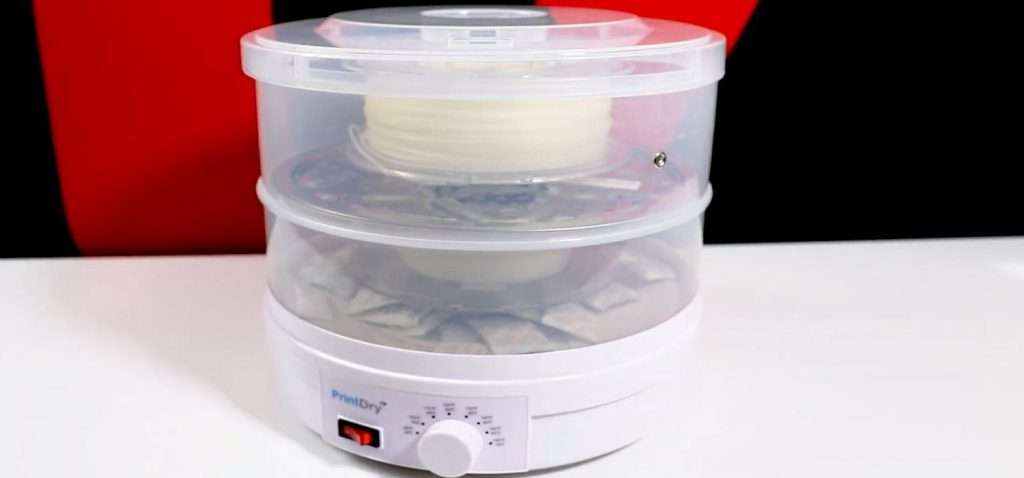
As you’ve learned, nylon is a thirsty material. Even the best nylon filament will quickly ruin itself by sucking up moisture.
How can you prevent that?
You must keep nylon filament spools in airtight containers. The best option is to keep it in its original packaging. The best nylon filament brands ship the material in sealable plastic bags (if they don’t, you might want to consider another brand).
But if you threw out the original bag or it was damaged, you can also store nylon filament in:
- Ziploc or freezer bags
- Vacuum-sealable bags
- Plastic cereal boxes
- Big Tupperware containers
- Tightly sealed plastic tubs
Whatever your storage solution, it’s a good idea to drop a couple of bags of silica gel or another desiccant in the container to keep moisture out.
And don’t forget to dry your filament before printing!
Strong, Flexible, and Pretty
Nylon filaments give you highly detailed and durable parts that can take a lot of punishment. Whether you’re printing tools, car parts, or cases for gadgets, any of these nylon filament brands will serve you well.
But not every nylon filament is the same. For the all-around best nylon filament, I recommend Overture Nylon. MatterHackers PRO Series will give you the most value, while Hatchbox or Ultimaker will cater to serious business needs.




